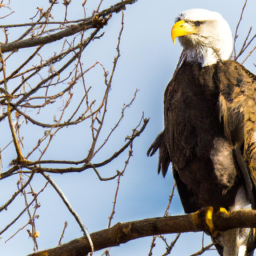
In this article, you will explore the fascinating world of “Strange Animals In Texas.” From bizarre creatures that roam the deserts to rare species found in the dense forests, Texas is home to a wide array of peculiar fauna. Prepare to be amazed as we uncover the secrets of these extraordinary animals and delve into the intriguing stories behind their existence. Whether you’re a nature enthusiast or simply curious about the extraordinary, this article will take you on an unforgettable journey through the enigmatic world of Texas’s strange animals.
Strange Animals In Texas
Texas is home to a diverse range of wildlife, from the iconic American alligator to the mysterious chupacabra. In this article, we will explore some of the fascinating animals that inhabit the Lone Star State. From the elusive ocelot to the intriguing Texas horned lizard, each creature has its own unique qualities and plays a vital role in its ecosystem. Let’s delve into the world of these strange animals and discover what makes them so fascinating.
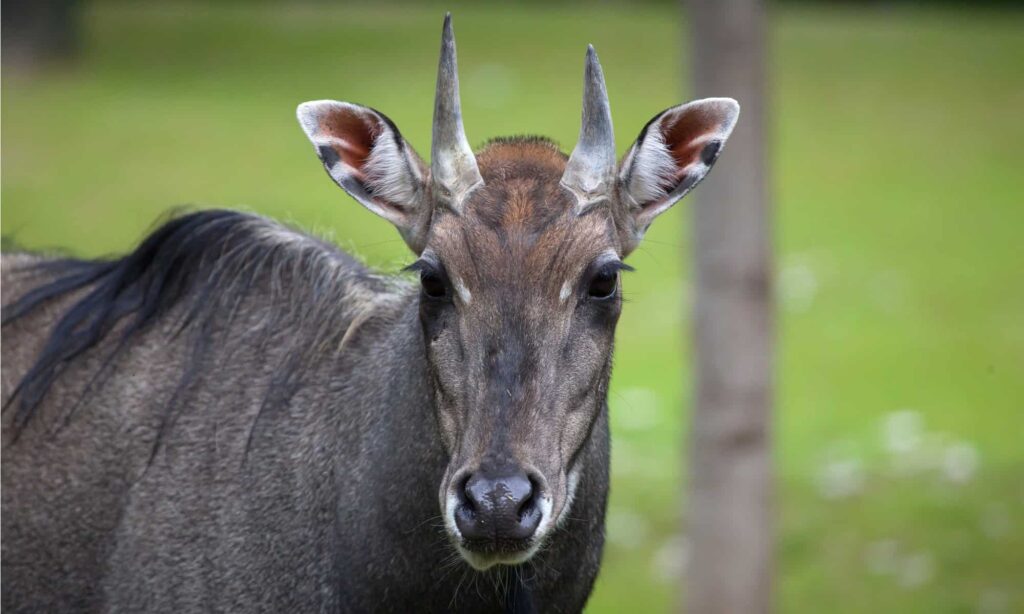
The Ocelot
Description and History
The ocelot, also known as the dwarf leopard, is a small wild cat native to Texas. It is characterized by its sleek, spotted coat, which ranges in color from light yellow to reddish-brown. With its striking appearance, the ocelot is often mistaken for a domestic cat at first glance. However, its large, expressive eyes and distinctive markings make it clear that it belongs to a different feline family.
Historically, ocelots were common in Texas, but their population has drastically declined due to habitat loss and illegal hunting. These elusive creatures now primarily reside in dense forests and brushlands, particularly in the southernmost parts of the state.
Habitat and Distribution in Texas
Ocelots prefer habitats with thick vegetation, such as marshes, forests, and riparian areas. In Texas, they are primarily found in the Lower Rio Grande Valley, where the dense vegetation provides ample cover for hunting and breeding. Occasionally, ocelots might wander into more urban areas, creating rare and thrilling sightings for lucky residents.
Conservation Status
The ocelot is considered a threatened species in Texas, with only about 50 individuals believed to remain in the wild. Efforts are underway to protect their habitats and establish wildlife corridors to ensure their survival. Conservation organizations, government agencies, and local communities are working together to preserve this iconic Texan species for future generations to enjoy.
The Javelina
Physical Characteristics
The javelina, also known as the collared peccary, is a small, pig-like mammal that is native to Texas. Despite its resemblance to a domestic pig, it is not actually related. Javelinas have coarse, bristly fur that varies in color from gray to black, and they sport a distinctive white collar of hair around their necks.
These social animals typically weigh between 30 to 60 pounds and have a compact, muscular build. They are often recognized by their sharp tusks, which males use for defense and establishing dominance within their social groups.
Behavior and Adaptability
Javelinas are highly adaptable creatures and can thrive in a variety of environments, from deserts to woodlands. They are primarily herbivorous, feeding on a variety of plant materials, including cacti, fruits, roots, and leaves. These opportunistic eaters can also display a taste for agricultural crops, which sometimes leads to conflicts with humans.
Javelinas live in social groups called “sounders,” which usually consist of around 8 to 20 individuals. They have a well-developed sense of smell and communicate using a range of vocalizations, including barks, grunts, and chattering sounds. Despite their fierce appearance, javelinas are generally non-aggressive towards humans and prefer to avoid confrontation.
Interaction with Humans
Javelinas have become a common sight in suburban neighborhoods in Texas, due to urban expansion encroaching on their natural habitats. As they adapt to living in close proximity to humans, conflicts can arise. It is important for residents to take precautions such as securing trash cans and not feeding these animals, as they can become conditioned to human food sources and lose their natural foraging behaviors.
The Texas Blind Salamander
Physical Characteristics
The Texas blind salamander, also known as the San Marcos salamander, is a unique amphibian species that is found exclusively in the underwater caves of central Texas. As its name suggests, this salamander is blind, lacking functional eyes due to its adaptation to the dark cave environment. It is pale in color, ranging from pinkish to whitish, with a slim, elongated body and feathery gills on its sides.
Unlike many salamanders, the Texas blind salamander retains its external gills into adulthood, allowing it to extract oxygen from the water. It possesses sensory tentacles on its snout, which help it navigate its surroundings and locate prey. With its highly specialized characteristics, the Texas blind salamander is truly a remarkable species that has evolved to thrive in the challenging cave ecosystem.
Habitat and Ecosystem
The Texas blind salamander is only found in the subterranean waters of the San Marcos and Comal Rivers in central Texas. These underground river systems provide a unique environment with stable water conditions, low light levels, and abundant food sources. The salamander’s long, slender body allows it to efficiently navigate the narrow passageways and crevices within the cave system.
The cave ecosystem in which the Texas blind salamander resides is fragile and highly sensitive to changes in water quality and quantity. Pollution and decreasing water levels pose significant threats to the survival of this species. Efforts to protect and conserve the water quality of the underground caves are crucial for the continued existence of the Texas blind salamander.
Conservation Efforts
The Texas blind salamander is listed as a threatened species due to its limited range and vulnerability to habitat degradation. Various conservation initiatives are in place to protect the salamander’s habitat and raise awareness about its importance. These efforts include water quality monitoring, land acquisition to preserve critical cave systems, and public education programs. Through these concerted actions, there is hope that the Texas blind salamander can be preserved for future generations to appreciate and study.

The Mexican Free-tailed Bat
Bat Features
The Mexican free-tailed bat is an impressive creature with a distinct appearance and remarkable abilities. These bats have a wingspan of up to 14 inches and are named for their long, slender tails that extend beyond their tail membranes. They are covered in dark gray or brown fur and have large, pointy ears that aid in echolocation.
One of the most fascinating features of the Mexican free-tailed bat is its speed and agility. These bats are incredibly fast flyers and can reach speeds of up to 60 miles per hour. They are also able to perform intricate aerial maneuvers and navigate through the dark using echolocation, emitting high-frequency sounds and interpreting the echoes to locate prey and avoid obstacles.
Habitat and Distribution
The Mexican free-tailed bat is found throughout Texas, particularly in large colonies that roost in caves, old buildings, bridges, and other structures. One of the most notable roosting sites is the Bracken Cave near San Antonio, which is home to the largest bat colony in the world, with millions of bats.
These bats are migratory, with populations moving between Mexico and the southern United States. During the summer, they migrate northward and establish maternity colonies in Texas, where they give birth and raise their young. The abundance of insects and suitable roosting sites make Texas an ideal habitat for these bats.
Role in Ecosystem
Mexican free-tailed bats play a crucial role in controlling insect populations, particularly agricultural pests. A single bat can consume thousands of insects per night, providing a natural form of pest control that reduces the need for harmful pesticides. Their feeding habits contribute to a balanced ecosystem, benefiting both humans and other wildlife.
In addition to their ecological importance, these bats also have cultural significance, attracting tourists and serving as a source of fascination and wonder. The sight of millions of bats emerging from their roosts at dusk is a mesmerizing spectacle that draws visitors from around the world to witness this remarkable natural phenomenon.
With increased awareness of their ecological significance and efforts to protect their roosting sites, these bats will continue to thrive in Texas and provide valuable services to both the environment and the local economy.
The Ringtail Cat
Physical Features
The ringtail cat, also known as the ringtail, is a unique creature that resembles a cross between a cat and a fox. It has a slender body, covered in thick, soft fur that is various shades of gray, buff, and brown. Its most distinctive feature is its long, bushy tail, which has black and white rings, hence the name “ringtail.”
This nocturnal animal has large, round eyes that provide excellent night vision, allowing it to navigate its surroundings in low light conditions. Its sharp, curved claws enable it to climb trees and rocky cliffs with ease, making it a skilled arboreal creature.
Behavior and Habitat
Ringtail cats are primarily found in the arid and semi-arid regions of Texas, where they inhabit rocky areas and canyons. They are solitary animals and are most active at night, venturing out in search of food, which consists of a varied diet that includes insects, small mammals, birds, fruits, and nuts.
These agile creatures are excellent climbers and spend much of their time in trees and rocky crevices, using their tails for balance. Their ability to adapt to different habitats, along with their secretive nature, makes them well-suited for survival in the harsh and unpredictable environments of Texas.
Threats and Conservation
Ringtail cats face numerous threats to their survival in Texas. Habitat loss, due to urbanization and agriculture, poses a significant challenge for these creatures. They also fall victim to vehicles on roadways and are sometimes hunted for their fur.
Efforts to conserve the ringtail cat’s habitat and protect their populations are crucial for their long-term survival. Preserving vast tracts of natural land, establishing wildlife corridors, and implementing education programs to raise awareness about their importance are essential steps towards ensuring the continued existence of this enigmatic Texan species.
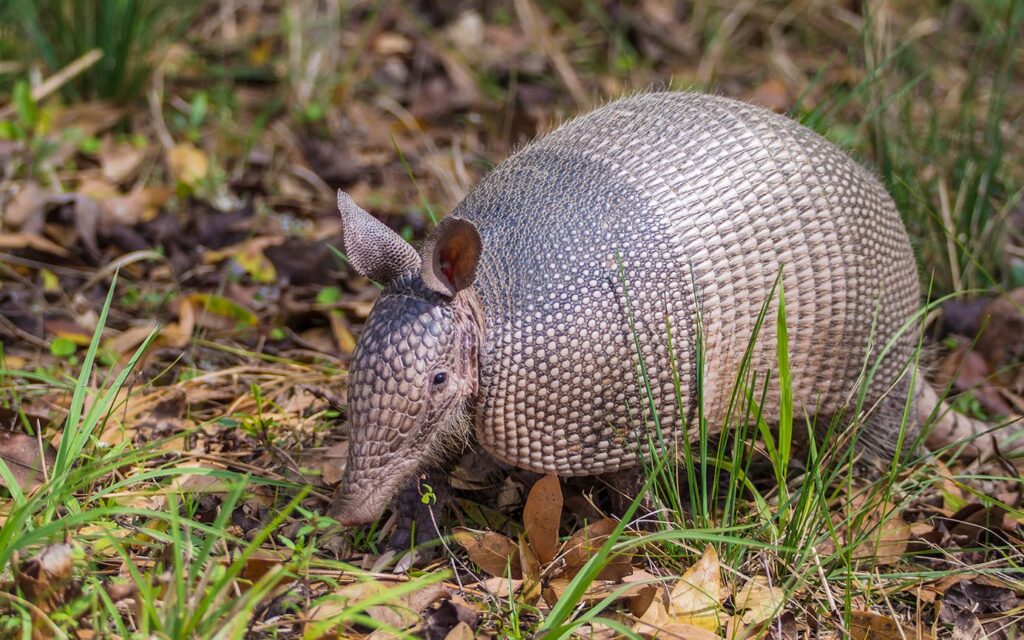
The Chupacabra
Mythology and Sightings
The chupacabra, meaning “goat-sucker” in Spanish, is a legendary creature that has captured the imagination of people around the world. The first reported sightings of the chupacabra emerged in Puerto Rico in the 1990s, with eyewitnesses describing a creature resembling a reptilian kangaroo with sharp fangs and spines on its back.
Over time, reports of chupacabra sightings spread to other regions, including Texas. Farmers and ranchers claimed that the mysterious creature was responsible for the brutal killings of livestock, sucking the blood out of its victims.
Descriptions and Theories
Various descriptions of the chupacabra have emerged over the years, ranging from a hairless dog-like creature to a bipedal reptilian humanoid. Skeptics have attributed reported sightings to misidentified animals, such as coyotes, dogs, or even mangy foxes.
Despite the lack of concrete evidence, the chupacabra continues to captivate the public’s imagination, with theories ranging from extraterrestrial origins to genetic mutations caused by human activities. The phenomenon surrounding the chupacabra serves as a reminder of the power of folklore and our fascination with the unknown.
Chupacabra in Popular Culture
The chupacabra has become a prominent figure in popular culture, appearing in books, movies, and various forms of media. It has become an iconic symbol of mystery and intrigue, inspiring countless works of fiction and captivating audiences with its enigmatic nature.
While the existence of the chupacabra remains unproven, its cultural impact cannot be denied. Whether myth or reality, the legend of the chupacabra continues to spark our curiosity and adds a touch of the supernatural to the diverse tapestry of Texan folklore.
The Nine-Banded Armadillo
Physical Appearance
The nine-banded armadillo is a small, armored mammal that is native to Texas. With its bony plates and leathery skin, this creature looks like a living tank. It has a unique armor-like shell composed of nine moveable bands, allowing the armadillo flexibility and protection.
Their long, sharp claws are perfectly adapted for digging in search of food or creating burrows for shelter. The armadillo’s snout is elongated and flexible, enabling it to sniff out insects and locate food underground. While their appearance may be strange to some, armadillos have evolved to thrive in the various ecosystems of Texas.
Behaviour and Habitat
Armadillos are primarily nocturnal animals, emerging from their burrows at dusk to forage for food. They have an insatiable appetite for insects and other invertebrates, such as ants, beetles, and worms. Their strong sense of smell and excellent hearing aid them in locating their prey.
These creatures are excellent diggers and construct extensive burrow systems, which serve as both their homes and a means of defense against predators. They prefer habitats with loose, well-drained soil, such as grasslands, woodlands, and desert regions. Armadillos adapt well to human-dominated landscapes and can often be seen in suburban areas searching for food.
Interaction with Humans
While armadillos typically pose no danger to humans, they can sometimes be a nuisance in residential areas. Their habit of digging can damage yards and gardens, leading to conflicts between homeowners and these curious creatures.
Additionally, armadillos can carry diseases, including leprosy, which can be transmitted to humans through contact with their bodily fluids. It is important to exercise caution when encountering armadillos and to avoid direct contact.
Despite the challenges they may pose, armadillos are a unique component of Texas’ wildlife. Their peculiar appearance and interesting behaviors make them an object of fascination and an integral part of the state’s diverse ecosystem.
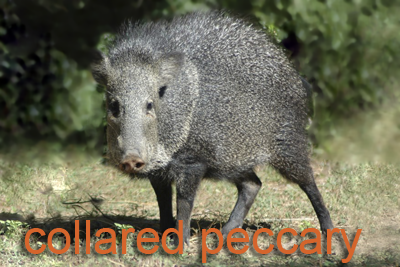
The Texas Horned Lizard
Physical Characteristics
The Texas horned lizard, also known as the horned frog or horny toad, is a fascinating reptile that is found throughout the state. This reptile is distinctive due to its spiky body and its wide, flattened head, which is adorned with pointed horns. They have a stocky build and can range in color from brown to gray, enabling them to blend in with their surroundings.
Perhaps one of the most intriguing features of the Texas horned lizard is its ability to shoot blood from its eyes as a defense mechanism. When threatened, these lizards can rupture tiny blood vessels in their sinuses, causing blood to squirt from the corners of their eyes. While this may seem grotesque, it serves as a deterrent to predators and provides a few precious seconds for the lizard to escape.
Habitat and Food Sources
The Texas horned lizard is well-adapted to the arid environments of the state, particularly areas with loose, sandy soils. They are commonly found in grasslands, deserts, and open scrublands, where they can bask in the sun to regulate their body temperature.
Their diet primarily consists of ants and other small invertebrates. The horned lizard uses its sticky tongue to capture its prey, and its dietary habits contribute to the control of ant populations, making them valuable allies in maintaining balanced ecosystems.
Conservation Status
While the Texas horned lizard was once a common sight in the state, its population has declined significantly due to habitat loss and fragmentation. The conversion of their natural habitat to agricultural and urban areas has limited their range and threatened their survival.
Efforts are underway to preserve the Texas horned lizard and restore its population in suitable habitats. Conservation measures include habitat restoration, captive breeding programs, and public education initiatives to raise awareness about the importance of protecting this iconic Texan reptile.
The Aoudad Sheep
Description and Distribution
The aoudad sheep, also known as the Barbary sheep, is an intriguing species that was introduced to Texas in the mid-20th century. Native to northern Africa, these large, wild sheep possess striking characteristics that set them apart from other species.
Aoudad sheep are well-adapted to arid environments, with thick fur that helps them withstand extreme temperatures. Males have impressive, curved horns that can reach lengths of up to 33 inches, while females have smaller, more slender horns. The sheep have a muscular build and can weigh up to 250 pounds, making them formidable creatures.
Aoudad sheep can now be found in various regions of Texas, particularly in the mountainous areas of the Trans-Pecos region. The presence of these exotic animals has added a touch of diversity to the Texan landscape and provides opportunities for outdoor enthusiasts to observe and appreciate them.
Behavior and Diet
Aoudad sheep are gregarious and live in small herds that typically consist of a dominant male, several females, and their offspring. They are agile climbers and can scale steep cliffs and rocky slopes with ease. Their herbivorous diet consists of grasses, shrubs, and other plant materials that they find in their arid habitats.
These resilient animals have adapted well to the challenging environments of Texas and have become an established part of the state’s wildlife. While their introduction was controversial due to concerns about their impact on native species, studies have shown that aoudad sheep have minimal negative effects on local ecosystems.
Environmental Impact in Texas
The presence of aoudad sheep in Texas has created opportunities for both hunters and nature enthusiasts. For hunters, aoudad sheep offer a challenging and exciting target. Nature enthusiasts have the chance to observe these majestic animals in their natural habitats, witnessing their extraordinary climbing abilities and observing their social interactions.
The economic impact of aoudad sheep in Texas should not be overlooked. Hunting-related activities generate revenue for local communities and contribute to the conservation efforts of wildlife organizations. The careful management of aoudad sheep populations ensures that they coexist with other native species and maintain a balance within their ecosystems.
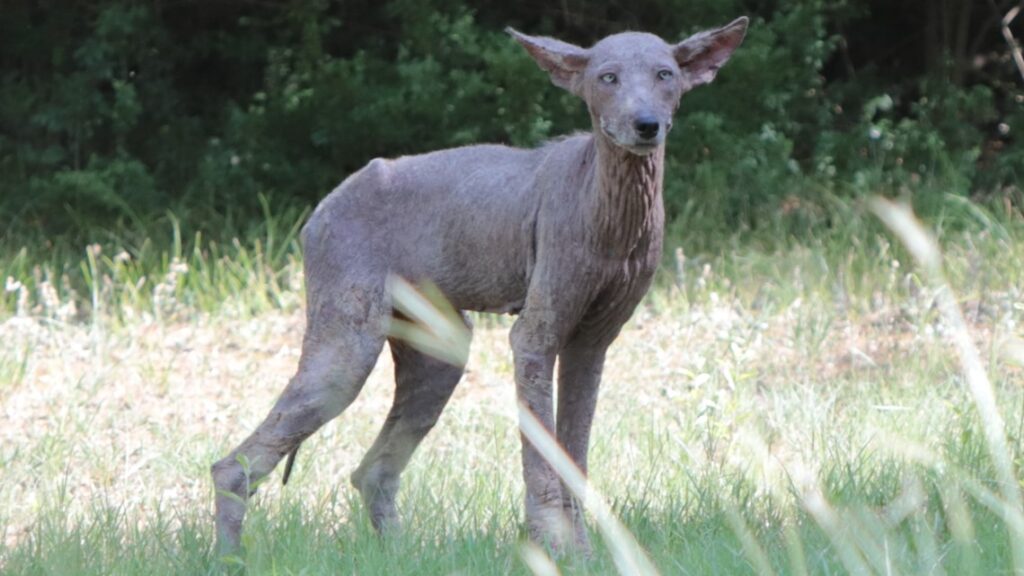
The American Alligator
Physical Attributes
The American alligator is an iconic reptile that is native to Texas and other southeastern states. These impressive creatures are characterized by their large, robust bodies, with males reaching lengths of up to 13 to 15 feet and weighing over 1,000 pounds. Females are generally smaller, with typical lengths ranging from 8 to 10 feet.
Alligators have a dark, armored body, which provides excellent camouflage in the murky waters they inhabit. Their jaws are lined with sharp teeth, and they possess a powerful bite force that can easily subdue their prey. Alligators are perfectly adapted for their semi-aquatic lifestyle, with webbed feet and a muscular tail that allows them to navigate through water with great agility.
Habitat in Texas
Alligators thrive in a variety of wetland habitats, including marshes, swamps, rivers, and lakes. In Texas, they can be found in a diverse range of ecosystems, from the coastal areas of the Gulf of Mexico to inland regions with abundant water sources.
The state’s rivers and wetlands provide ideal conditions for alligators, as they offer ample food sources and suitable nesting areas. Alligators regulate their body temperature by basking on the banks of water bodies, making thermoregulation an important factor in their habitat preferences.
Conservation Status and Human Interactions
The American alligator was once endangered due to habitat loss and unregulated hunting. However, through conservation efforts and strict regulations, their populations have rebounded, and their status was downgraded to “least concern” in recent years. This success story serves as a testament to the effectiveness of conservation strategies in protecting vulnerable species.
Human interactions with alligators in Texas occasionally occur, particularly in areas where populations overlap with human settlements. It is important to exercise caution and avoid feeding or harassing these animals, as this can lead to negative behaviors and potential conflicts.
Alligators play a vital role in their ecosystems, acting as top predators and regulating the populations of other species. Their presence is an integral part of the rich biodiversity of Texas, reminding us of the importance of conserving natural habitats and coexisting with the remarkable wildlife that inhabits our state.
In conclusion, Texas is home to a remarkable array of strange and fascinating animals. From the endangered ocelot to the legendary chupacabra, each creature has unique characteristics and contributes to the diverse tapestry of Texan wildlife. By understanding and appreciating these animals, we can work towards their conservation and ensure that future generations will have the opportunity to experience the wonders of Texas’ extraordinary fauna.






